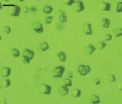(Press-News.org) (Boston) – Researchers from the Boston University School of Medicine (BUSM) and Boston University School of Public Health (BUSPH) have shown that alcohol is a major contributor to cancer deaths and years of potential life lost. These findings, published in the April 2013 issue of the American Journal of Public Health, also show that reducing alcohol consumption is an important cancer prevention strategy as alcohol is a known carcinogen even when consumed in small quantities.
Previous studies consistently have shown that alcohol consumption is a significant risk factor for cancers of the mouth, throat, esophagus and liver. More recent research has shown that alcohol also increases the risk of cancers of the colon, rectum and female breast. While estimates have shown that alcohol accounts for about four percent of all cancer-related deaths worldwide, there is a lack of literature focusing on cancer-related deaths in the U.S.
Timothy Naimi, MD, MPH, from the Department of Medicine at BUSM and colleagues from the National Cancer Institute, the Alcohol Research Group, Public Health Institute and the Centre for Addiction and Mental Health, examined recent data from the U.S. on alcohol consumption and cancer mortality. They found that alcohol resulted in approximately 20,000 cancer deaths annually, accounting for about 3.5 percent of all cancer deaths in the U.S.
Breast cancer was the most common cause of alcohol-attributable cancer deaths in women, accounting for approximately 6,000 deaths annually, or about 15 percent of all breast cancer deaths. Cancers of the mouth, throat and esophagus were common causes of alcohol-attributable cancer mortality in men, resulting in a total of about 6,000 annual deaths.
The researchers also found that each alcohol-related cancer death accounted for an average of 18 years of potential life lost. In addition, although higher levels of alcohol consumption led to a higher cancer risk, average consumption of 1.5 drinks per day or less accounted for 30 percent of all alcohol-attributable cancer deaths.
"The relationship between alcohol and cancer is strong, but is not widely appreciated by the public and remains underemphasized even by physicians," said Naimi, who served as the paper's senior author. "Alcohol is a big preventable cancer risk factor that has been hiding in plain sight."
### END
Study shows alcohol consumption is a leading preventable cause of cancer death in the US
2013-02-15
ELSE PRESS RELEASES FROM THIS DATE:
Johns Hopkins researchers create new air sacs in mouse model of emphysema using novel growth factor
2013-02-15
In a study of mice, researchers at Johns Hopkins have identified a new molecular pathway involved in the growth of tiny air sacs called alveoli that are crucial for breathing. The scientists say their experiments may lead to the first successful treatments to regrow the air sacs in people who suffer from diseases such as emphysema in which the air sacs have been destroyed by years of smoking. The work may also suggest new therapy for premature infants born before their lungs are fully developed.
"One of the most daunting challenges we face as physicians is helping patients ...
U of M researchers find that doula care for low-income women could save taxpayers money
2013-02-15
MINNEAPOLIS / ST. PAUL (EMBARGOED UNTIL February 14, 2013) – New research from the University of Minnesota's School of Public Health has found lower cesarean birth rates among Medicaid beneficiaries with access to support from a birth doula than among Medicaid patients nationally. A doula is not a medical provider, but is a trained, experienced professional person who can provide information, physical assistance and support to a woman during childbirth.
The research indicates that policy changes to provide Medicaid coverage for birth doulas may actually decrease costs ...
X-ray laser sees photosynthesis in action
2013-02-15
Opening a new window on the way plants generate the oxygen we breathe, researchers used an X-ray laser at the Department of Energy's (DOE) SLAC National Accelerator Laboratory to simultaneously look at the structure and chemical behavior of a natural catalyst involved in photosynthesis for the first time.
The work, made possible by the ultrafast, ultrabright X-ray pulses at SLAC's Linac Coherent Light Source (LCLS), is a breakthrough in studying atomic-scale transformations in photosynthesis and other biological and industrial processes that depend on catalysts, which ...
Combo of Avastin, second drug shows promise fighting brain cancer, Mayo Clinic finds
2013-02-15
JACKSONVILLE, Fla. — The drug bevacizumab, also known by the trade name Avastin, shrinks tumors briefly in patients with an aggressive brain cancer known as glioblastoma multiforme, but then they often grow again and spread throughout the brain for reasons no one previously has understood. Now, Mayo Clinic researchers have found out why this happens. They have also discovered that pairing Avastin with another cancer drug, dasatinib, can stop that lethal spread. Dasatinib is approved for use in several blood cancers.
The findings, based on an animal study, are detailed ...
Scientists develop improved fire management tools for Africa's savannas
2013-02-15
DAKAR, SENEGAL (15 February 2013)—Scientists at the Nairobi-based World Agroforestry Centre (ICRAF) and partners have developed specialized graphs that map out fire behavior, known as nomographs, for landscape managers in Africa's savannas. The study, published in the February issue of the Journal of Arid Environments, pinpoints the optimal conditions for setting early-season prescribed fires—a process that when executed and timed properly, reduces the risk and impact of late dry season bushfires in increasingly fragile ecosystems, both of which are exacerbated by climate ...
Humans and chimps share genetic strategy in battle against pathogens
2013-02-15
A genome-wide analysis searching for evidence of long-lived balancing selection—where the evolutionary process acts not to select the single best adaptation but to maintain genetic variation in a population—has uncovered at least six regions of the genome where humans and chimpanzees share the same combination of genetic variants.
The finding, to be published Feb. 14 in the journal Science, suggests that in these regions, human genetic variation dates back to a common ancestor with chimpanzees millions of years ago, before the species split. It also highlights the importance ...
Smoking bans linked with 'successive reductions' in preterm birth
2013-02-15
The study supports the notion that smoking bans have public health benefits from early life.
It is well established that smoking during pregnancy impairs the growth of an unborn child and shortens gestation. Exposure to second-hand smoke has also been found to affect birth outcomes, yet little is known about the impact of recent smoke-free legislation on birth weight and preterm birth.
So a team of researchers, lead by Dr Tim Nawrot from Hasselt University, investigated whether recent smoking bans in Belgium were followed by changes in preterm delivery. In Belgium, ...
Study finds strong link between income inequality and readmission risk, but not mortality
2013-02-15
The authors estimate nearly 40,000 extra admissions to hospital as a result of income inequality over the three year study period.
Income inequality is associated with a variety of adverse health outcomes, including higher infant mortality, reduced life expectancy, and poorer self-reported health. But little is known about the possible link between income inequality and outcome after admission to acute care hospitals.
So a team of US researchers examined the association between income inequality and risk of death and readmission within 30 days of discharge from hospital. ...
Tough, light and strong: Lessons from nature could lead to the creation of new materials
2013-02-15
In a sweeping review of the field of bio-inspired engineering and biomimicry in the Feb. 15 issue of the journal Science, two engineers at the University of California, San Diego, identify three characteristics of biological materials that they believe engineers would do well to emulate in man-made materials: light weight, toughness and strength.
Joanna McKittrick and Marc Meyers, from the materials science program at the Jacobs School of Engineering at UC San Diego, examine the three characteristics in a wide range of materials, from spider silk, to lobster and abalone ...
Clues to the mysterious origin of cosmic rays
2013-02-15
In the year 1006 a new star was seen in the southern skies and widely recorded around the world. It was many times brighter than the planet Venus and may even have rivaled the brightness of the Moon. It was so bright at maximum that it cast shadows and it was visible during the day. More recently astronomers have identified the site of this supernova and named it SN 1006. They have also found a glowing and expanding ring of material in the southern constellation of Lupus (The Wolf) that constitutes the remains of the vast explosion.
It has long been suspected that such ...


